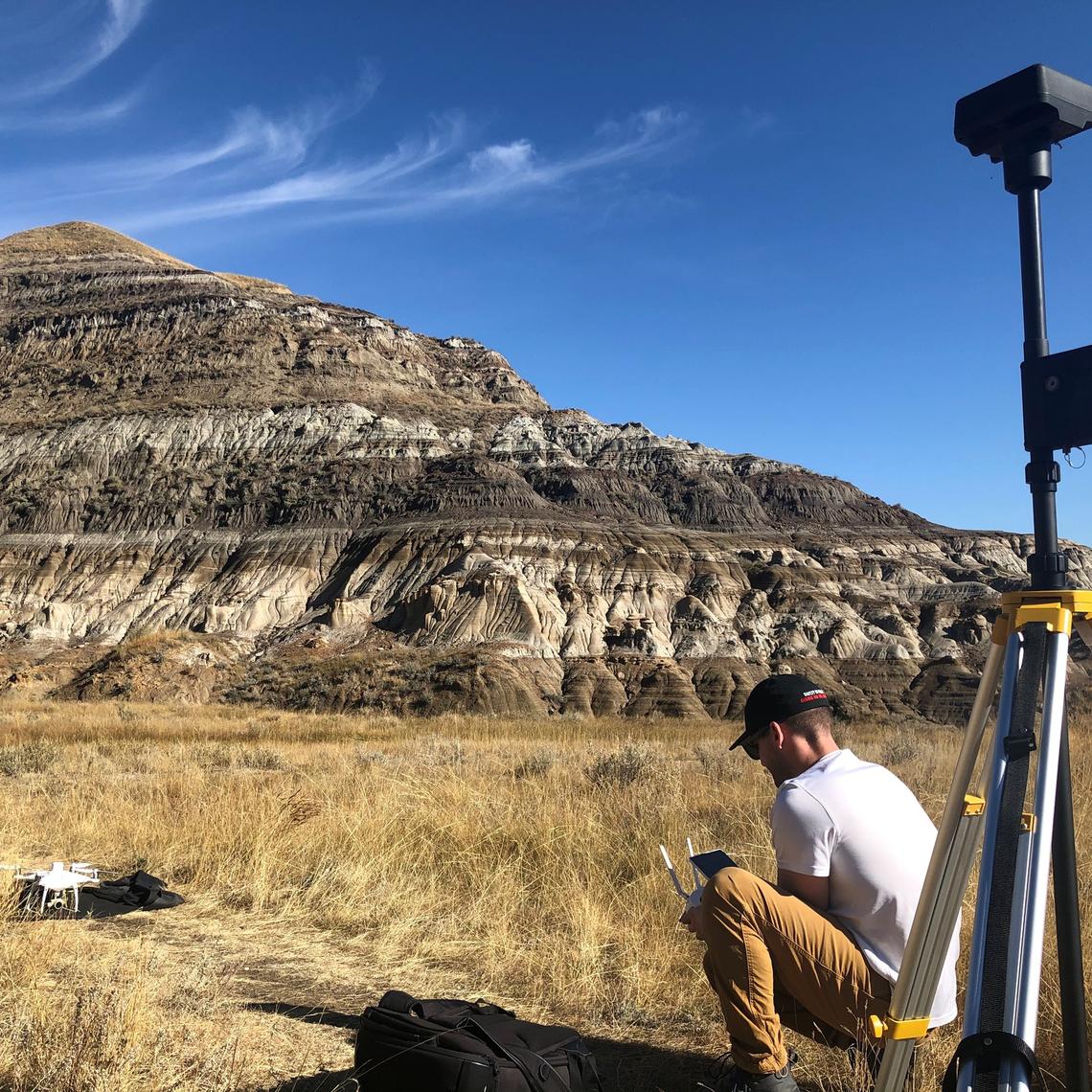
Oct. 17, 2022
UCalgary researchers make field-based learning accessible via video games
Imagine taking a field trip without having to leave your home. One minute you are sitting at your computer desk, the next, you are immersed in the environment of the Hoodoos Public Recreation Area outside of Drumheller. You walk among the sandstone pillars, exploring the landscape and taking part in interactive learning activities.
A team of researchers in the Department of Geoscience has made this concept of virtual field experiences a reality. With the help of a 2021 University of Calgary Teaching and Learning Grant, they have created a first-person video game with the intention of bringing immersive and experiential learning opportunities to students in a new and accessible format.
Bringing classroom-based concepts together
The grant team includes professor and head of the Department of Geoscience, Dr. Stephen Hubbard, PhD, associate professor (teaching), Dr. Glenn Dolphin, PhD, and postdoctoral researcher Dr. Paul Nesbit, PhD. Their project, Virtual Field Experience: A Simulated Field Trip for Accessible Experiential Geoscience Education aims to combine virtual outcrop models (VOMs) with a gaming platform to enhance student usability and ease of navigation around the VOM.
VOMs are digital, 3D representations of visible exposures of bedrock or other geologic formations on the surface of the earth. By combining these 3D models with a gaming platform, the team hopes to create an accessible mode of learning geological field skills that does not require the resources, time and logistical constraints of actual field experiences.
“If you ask a geologist, field trips are often said to be essential for geoscience education. However, it is becoming increasingly challenging due to costs, time, safety, and more recently global pandemics, to take large groups of students on field trips,” explains Nesbit.
Given the value that hands-on experiential learning opportunities have for students, the team is working to make field-based learning experiences more inclusive. “In fields like geoscience we really see the experience of being in the field to be critical for bringing concepts traditionally taught in the classroom together,” says Hubbard. “It’s a place where lightbulbs turn on in the minds of students, so to speak.”

Paul Nesbit prepares to launch a drone at the Drumheller field site. The images acquired were the foundation for the Virtual Outcrop Model constructed for the study
Stephen Hubbard
Creating the virtual environment
Receiving a Teaching and Learning Grant helped the team take foundational steps toward the creation of a unique learning approach for geoscience education.
“This grant has enabled us to make huge technological strides that improve the user interface and computational accessibility beyond our collective experience creating similar digital resources,” says Nesbit.
The work has also resulted in widespread interest and new collaborations throughout the university with interest in implementing augmented reality (AR) visualization and wider applications within classroom settings.
So far, they have gathered thousands of drone images, generated a 3D photorealistic model, and created a first-person navigable videogame of the Hoodoos Public Recreation Area outside of Drumheller. In the next year, they will be working to bring it into the classroom by including interactive learning activities that simulate educational content typically presented during in-person field trips.
Teaching and Learning Grants and Scholars Program
The University of Calgary Teaching and Learning Grants and Scholars Program is designed to enhance student learning experiences through the integration of teaching and learning research and educational leadership. Successful applications can receive up to $40,000 in funding.
The Taylor Institute for Teaching and Learning invites applications from academic staff and librarians, archivists and curators, as well as teaching assistants, postdoctoral scholars, student service professionals and administrative staff. Applications are due Jan. 16, 2023.
Online drop-in consultation sessions are offered in October, and internal peer review opportunities are open until Oct. 31, 2022. Learn more about these sessions.
The success of the grants program is strengthened by the diverse perspectives of the university community through the adjudication process. Adjudication for the grants will occur during February 2023. Faculty, staff and students can apply to adjudicate grant applications and get unique insight into the program. Apply to be an adjudicator.
About the Taylor Institute for Teaching and Learning
The Taylor Institute for Teaching and Learning is dedicated to better understanding and improving student learning at the University of Calgary. Its mission is to strengthen teaching and learning communities, cultures and practices to create extraordinary learning experiences. Every year, the Taylor Institute publishes a detailed community report to share and measure their progress toward key priorities. Learn more about the 2021 Taylor Institute Community Report.





